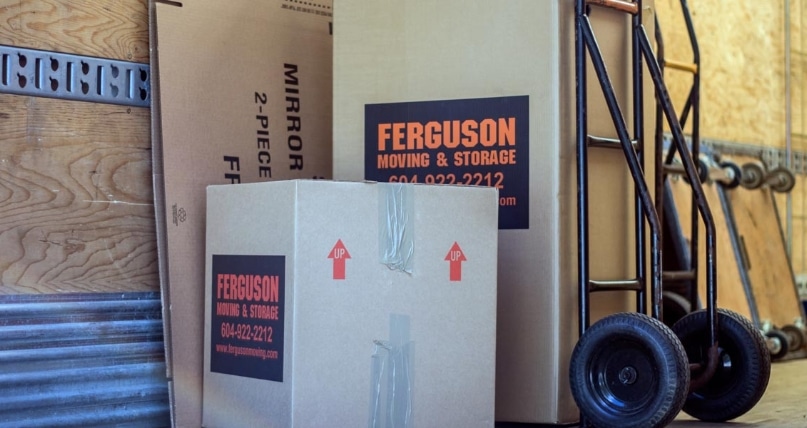- Moving Tips, Packing Tips, Vancouver Movers Guide
How to pack kitchen food when moving in or out of Vancouver

[et_pb_section fb_built=”1″ _builder_version=”4.16″ da_disable_devices=”off|off|off” global_colors_info=”{}” da_is_popup=”off” da_exit_intent=”off” da_has_close=”on” da_alt_close=”off” da_dark_close=”off” da_not_modal=”on” da_is_singular=”off” da_with_loader=”off” da_has_shadow=”on”][et_pb_row _builder_version=”4.16″ background_size=”initial” background_position=”top_left” background_repeat=”repeat” global_colors_info=”{}”][et_pb_column type=”4_4″ _builder_version=”4.16″ custom_padding=”|||” global_colors_info=”{}” custom_padding__hover=”|||”][et_pb_text _builder_version=”4.17.6″ background_size=”initial” background_position=”top_left” background_repeat=”repeat” hover_enabled=”0″ global_colors_info=”{}” sticky_enabled=”0″]
You might think this topic doesn’t need a ‘how to.’ But you’d be surprised what the Internet can teach you when you do a little digging. Call it a ‘hack’ if you will. We’re about to teach you how to pack kitchen food when moving in or out of Vancouver.
Step 1: eat your food before you move in or out of Vancouver
This is important. Don’t buy more food at the grocery store until you make a serious commitment to go through your pantry, shelves, spice drawer and fridge. You will be amazed at how much food you have accumulated and not eaten. On the one hand, this can make you sad about the money you wasted. On the other hand, this can help you get creative by looking up recipes specifically to use all your ‘odds and ends’ food ingredients. Won’t that be fun?
Food is heavy. If your mover has quoted you based on weight (which we think they shouldn’t), then moving food can get expensive. So if you don’t eat your food to save your money, you’ll need to consider whether getting rid of it is going to be cheaper than buying new food at your new home.
Also, as a resident (or soon to be resident) of Vancouver, moving food is not as simple as you may think. We’ll get into that.
Step 2: reduce and categorize your food to plan for the cost of the move
As movers in Vancouver, we would strongly not recommend you take the approach of ‘dumping’ all your food into cardboard boxes and hope to ‘deal with it’ later. In fact, while you’re getting an estimate, you should be telling your moving company about how much food you want to transport in their trucks. If it’s unreasonable, this can affect the quote you get – even if it is a binding quote from an in-person visit. Don’t forget, the in-person quote that a mover gives you won’t be able to take into account how much food you will have stored in your cupboards on moving day. So be wise, and talk about that in advance with them, to avoid disputes.
The best thing you could do is to start reducing your food, either by eating it up, as noted in Step 1 above, or by getting rid of it. You can throw away the about-to-expire foods. And, while we don’t want to promote food waste, if you’re keeping a cereal box around because it has a snack-size serving left at the bottom of it, maybe don’t plan on keeping it.
You also will want to categorize your food so that you can properly plan for moving it later. Heavy things will transport differently than lighter things, and the way they get packed can affect how well they do in transit. You won’t want to pack up a bunch of dry pasta only to find out it got crushed in the moving truck when you arrive at your new home. That would feel like a waste of effort.
Perishables:
Perishables should be kept somewhere where they can easily be put into a cooler on moving day. Or…left behind. Remember, movers won’t realistically be able to move your fridge or deep freezer if it still has food in it.
If you want to go all survivor-mode and learn how to doomsday prep your food for long term storage – even if it’s dry foods – check out this article on how to do that:
https://thesurvivalmom.com/20-foods-that-must-be-re-packaged-for-long-term-storage-and-how-to-repackage-them/
That way, if your kitchen is full of a farm-sized pantry you planned on using to feed 13 kids for the next 20 years, you won’t lose your investment during the move. But on a serious note, that blog post above has some really good pointers about preserving shelf-life on the foods you didn’t think would perish so easily.
Glass food containers
Foods in glass containers are another story. Those will have to be very carefully packaged upright with lots of padding, or otherwise thrown away (though this article suggests getting rid of them altogether). Another option is pouring their contents into sturdy plastic containers, but that may not be practical depending on how far you’re moving. Some moving companies may say no to moving glass bottles.
What about food you medicines4all.com store in glass canisters you paid good money for? Good question. These decor items should be treated like your plateware. You may want to empty their contents so you can pack them as carefully as your fragile items. Sorry, but the food needs to go somewhere else…unless you’re willing to take the risk (which is more doable on a short-distance move, or when you can pack them in your car).
Liquid flammables:
If you’re holding kerosine around for your BBQ, or other flammables meant for cooking, the moving companies will likely give you a flat out ‘no’ to putting them in the moving truck. So just forget about it. You’ll need to find a new home for them, or legally dispose of them.
Spices, flours, teas, coffees and other dry goods:
Some dried herbs and cooking ingredients need to be kept at certain humidity levels to stay useful. This is where moving in Vancouver is a bit tricky. The region has different seasons depending on what time of year you’re moving. And on any given day, humidity levels outside can change. So you’ll need to take care when packing these kitchen foods for moving – even if it’s just across town.
While convention would say to just tape them up and make sure they are sealed before the move, experience may remind you how easily they can either clump, or go stale depending on temperature and humidity. And, as this article notes, spices can be expensive, especially when you consider how many years it took you to accumulate them.
So whether it’s placing them in a climate-controlled cooler, adding moisture-suckers to their containers, or even using vacuum sealers to preserve them, be careful with these. That is, if they are valuable enough to you to do so.
Step 3: donate your unwanted food to charity before moving, or through your moving company
You can also then donate food to a charity, if you don’t want to take it with you. This is especially a good idea for canned or dry goods. And, this is something you’ll want to do on a long-distance move especially.
As movers, we have programs for donating food during our trips to service you. You can keep your donations separate for pick up. But ideally, you’ll want to clear out your space before the movers arrive.
See these articles for more info on donating food:
https://fergusonmoving.com/blog/packing-food-donation/ and https://fergusonmoving.com/blog/dec-1st-2013-participate-move-hunger/ and https://fergusonmoving.com/blog/fergusons-supports-local-food-bank/
Step 4: don’t bring foods that can get contaminated, and avoid contamination
If you’re planning on bringing a paper bag of flour, remember that if it’s been opened, or if it’s susceptible to tear, you are risking contamination. As the preservation blog noted above, foods with some shelf life won’t last forever, and insects can leave eggs in there too. The environment of the move will increase that risk all the more. Temperature also affects the lifespan of foods, especially perishables.
Also, cardboard boxes probably aren’t best for keeping food safe if it’s in plastic bags. Consider plastic containers, or companies that rent out plastic moving boxes, like FrogBox in Vancouver.
Step 5: don’t move illegal foods across borders
You may not be allowed to bring some vegetation across borders. So do declare them to your movers, or look up the rules in advance to avoid the hassle of finding them in the moving truck if you are told they must go after the fact.
Step 6: pack up and hand off to the movers
After you’ve gone through the steps above, it’s time to pack up the remaining food you want to take with you.
You can leave this part to the movers, or do it yourself. Either way, remember where your foods are, so they can be unpacked as soon as possible when you arrive at your new home. You won’t want them sitting under the elements too long.
See related:
Setting up a house bar after you move into your new home
Coquitlam movers explore portable appliances for downsizing or small-space living
Moving large appliances: How to move a Refrigerator
Call Ferguson Moving & Storage in Vancouver, BC
If you are moving to Vancouver BC and looking for a good moving & storage company that you can trust, give Ferguson Moving and Storage a call at 604-922-2212 or request a quote online through our website!Save
Save
[/et_pb_text][/et_pb_column][/et_pb_row][/et_pb_section]

Categories
Moving Tips

This is the heading
Lorem ipsum dolor sit amet, consectetur adipiscing elit. Ut elit tellus, luctus nec ullamcorper mattis, pulvinar dapibus leo.

This is the heading
Lorem ipsum dolor sit amet, consectetur adipiscing elit. Ut elit tellus, luctus nec ullamcorper mattis, pulvinar dapibus leo.
We make moves easy for you.
- Local Moving
- Long Distance Moving
- Seniors Moving
- Piano Moving
- Item Relocation
- Overnight and Long-term Storage
- Packing Supplies





